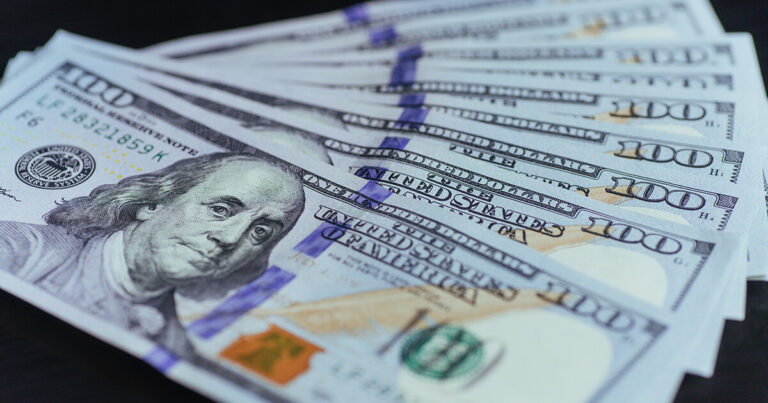
While the Ukraine crisis continues to cause uncertainty and escalate inflation, surely you can relax for a second. We bring you an epic summary of this week’s forex trading related news so that you don’t miss a thing.
Financial markets were mixed as investors tried to make sense of the tension between Russia and Ukraine. But overall, market sentiment improved in the last half of the week to support commodities and risk assets.
After a rough start to the week, risk assets staged a comeback. New Zealand, Canadian and Australian dollars topped while safe-haven currencies ended the week lower.
Fundamentals

The Ukraine crisis, economic data, and oil price were the key drivers for the financial markets.
Russia/Ukraine Crisis, Still Worse
Ceasefire talks between Russia and Ukraine held in Turkey failed. The negotiations were set up so that the Presidents of both countries could finally meet face-to-face. But, unfortunately, the meeting ended without a ceasefire.
Humanitarian conditions in Mariupol city are dire and desperate as most residents survive without power and have run out of food.
Among other demands, Russia Insists on
- Ukraine should not join NATO
- Demilitarization of Ukraine
On Friday, US President Bidden and China’s President Xi Jinping held a virtual meeting over the Ukraine crisis. President Xi insisted China does not support Russia’s actions. However, Xi added countries should never meet on battlefields.
President Biden warned China against sending military aid to Russia. Any assistance to the kremlin would attract dire consequences.
Economic Updates
Economic updates tickled in throughout the week, with inflation data, consumer spending, and monetary policies dominating financial trading related news. Amidst the crisis in Ukraine, G7 economies showed resilience.
Canada’s consumer spending rates have reached an all-time high – growing at 5.7 percent to 30-year highs. Retail sales figures of G7 nations were also robust. Market sentiment turned positive from mid-week. The move resulted in a price drop in commodities and oil but uplifted riskier assets.
Midweek, America’s and England’s banks to hike interest rates further supported riskier assets.
Oil Price Per Barrel News
Oil closed the week lower for the second week, following ceasefire talks between Russia and China. It fell further after China’s oil price per barrel news compounded the losses. In addition, China imposed yet another lockdown measure to stem a fresh coronavirus outbreak.
Economic Review and performance of G7 currencies
Table: g7 currencies performance summary
| Currency pair | 12th Mar 2022 | 18th Mar 2022 | Average price | Percentage change | Remarks |
| USD | 98.879 | 98.227 | 98.553 | -0.911 | drop |
| GBPUSD | 1.300 | 1.3180 | 1.3102 | 1.1046 | increase |
| EURUSD | 1.0939 | 1.1055 | 1.1013 | 1.3383 | increase |
| USDCHF | 0.9385 | 0.9312 | 0.9475 | -0.3638 | drop |
| USDJPY | 118.18 | 119.17 | 118.59 | 1.61 | increase |
| USDCAD | 1.2822 | 1.2602 | 1.2698 | -1.1065 | drop |
| AUDUSD | 0.7187 | 0.7415 | 0.7292 | 1.7147 | increase |
| NZDUSD | 0.6745 | 0.6903 | 0.6826 | 1.4103 | increase |
US Dollar Forex – US Starts Tightening Cycle to Fight Inflation
US dollar ended a five-week winning streak. It fell by nearly one percent to close the week at 98.229, after rising by 0.48 percent. Earlier in the week, retail sales and wholesale inflation supported us dollar forex.
The producer price index tumbled. It rose by just 0.2 percent, lower than the previous one percent increase. And NY fed survey projects yearly inflation to hit over six percent from 5.8 percent.
Retail sales data, also disappointed. Core retail sales improved by 0.2 percent, and retail sales went up slightly by 0.3 percent. Later in the week, manufacturing data and jobless claims were more upbeat. Philly’s manufacturing index gained eleven points to hit 27.4 from 16.0. And jobless claims eased by fifteen thousand to 214 thousand.
While the economic data dominated forex trading news, FED’s monetary policy decision and projections came midweek. As expected, Fed hiked interest rates for the first time in four years. On Wednesday, the fed members approved increasing rates by twenty-five basis points to a quarter to half percentage points.
In addition, it projected hawkish interest rates going into 2023. Fed members expect interest rates to hit 2.8 percent in the first quarter of 2023 against a previous projection of 0.9 percent.
Forex trading reports shows the US dollar weakened significantly on Wednesday despite the rate hike. The Fed’s rate hike did not support it against a surging demand for riskier assets. Besides, the risk assets rallied on hopes of a ceasefire in Ukraine and stimulus from China.
GBP Pairs News, Upbeat
Sterling pound rallied by over one percent to 1.3178. Previously, the pound had weakened by one and a half percent. Economic updates featured heavily in GBP pairs news. UK posted positive employment and claimant counts.
Unemployment rate in UK declined to 3.9 percent from 4.1 percent. Claimant counts continue to drop. In the week, the claimant counts by an additional 48.1 thousand. While the economic data uplifted the pound, trading related news shows indicate England’s monetary policy decision took center stage.
As expected BoE hiked interest rates by a quarter basis points to 0.75 percent. Amid the rate hike, the UK expects double-digit inflation seen last in the 1980s.
Euro To Dollar Trend
Euro registered a first weekly gain against the dollar since January. It closed the week higher by 1.27 percent to 1.1051. In the prior week, it had fallen by 0.15 percent. Economic sentiment data for Eurozone and Germany weighed on the euro to dollar trend.
Germany and the Eurozone posted more robust data amid the Ukraine crisis, contrary to market expectations. Germany’s ZEW economic sentiment tumbled to -39.3 from 54.3.
In another financial trading related news, Eurozone’s trade data and wage growth, though positive, failed to move a dial. Eurozone’s trade deficit widened to 27.3 billion euros from 4.6 million euros. Wage growth expanded slightly.
CHF Exchange Rate
Swiss franc ended a series of losses against the dollar. It appreciated by 0.3638 percent in the week to 0.9312, after weakening by almost two percent in the previous week. Switzerland’s monthly trade exports surged by 10.3 percent. As a result, Switzerland’s trade balance rose to 5.95 billion Swiss francs from 3.18 billion Swiss francs.
SECO adjusted Swiss economic growth projection for this year to 2.8 percent. SECO made the adjustments because of higher inflation and the Ukraine crisis.
Canadian Dollar Price
Despite the ongoing Russia/Ukraine war, recent risk-on sentiment uplifted the Canadian dollar price. It gained 1.11 percent to 1.2603. Previously, it had weakened by 0.10 percent. In the week, inflation and retail sales numbers influenced Canadian dollar trading related news.
Inflationary pressures continue to hit up Canada, uplifting its currency. Core inflation rate accelerated to 4.8 percent from 4.3 percent. Retail sales data also supported Canadian dollar outlook. Consumer spending surged by 3.2 percent, reversing a 2 percent last drop.
The economic data slightly impacted the Canadian dollar, but the continuing improvement in oil prices ultimately delivered the loonie’s strong performance in the week.
Meanwhile in…
Asia-Pacific Trading Related News

It was a mixed performance. While Japanese yen extended downtrend, Aussie and Kiwi dollars continued the bullish run into another week.
Aussie Dollar Forex News
Australian dollar appreciated by 1.67 percent to 0.7415, emerging as the top market mover in the week. Economic data and China’s pledge to support Canada’s economy uplifted Aussie dollar forex news.
On the economic front, positive employment numbers uplifted Aussie dollar. February’s employment records rose by 121.9 thousand, lowering the unemployment rate to four percent from 4.2 percent. Previously, Australia recorded a sharp decline in employment of seventeen thousand.
Australian dollar banked on hopes of Beijing stimulus program to support the Chinese economy.
Dollar New Zealand Exchange Rate
In this week’s performance, Kiwi Dollar came in second after the Australian dollar. It gained 1.45 percent to 0.6908. NewZealand’s fourth-quarter economy expanded by three percent, reversing a previous 3.7 percent contraction.
The dollar new Zealand exchange rate also rose in hopes of the Beijing stimulus program to support the Chinese economy.
Jpy Trading News
Japanese Yen accelerated its weekly losses. This week it slid by 1.60 percent to 119.170. In the week before, it had tumbled by 2.15 percent. Earlier in the week, Trade data and inflation rate influenced jpy trading news.
A sharp surge in exports reduced Japan’s trade deficit. As a result, inflationary pressures also spiked, with Japan’s core annual inflation rate accelerating to 0.6 percent from 0.2 percent.
While the economic data weighed on the yen, other factors weakened it. Monetary policy divergence, positive market sentiments, and raising global benchmark yields weighed on the yen.
On Friday, the Bank of Japan left monetary policy unchanged. Further, the bank expressed concern over the economic fallout from Russia’s invasion of Ukraine.
Week Ahead
We expect Ukraine crisis developments and peace negotiations to drive market sentiments in the coming week. At the end of the week, an EU summit will review the economic fallout from the crisis and possible support measures. Next week, the Fed and BoE rate hikes will continue impacting the forex market with minimal economic updates.
Finally, will the Russia/Ukraine ceasefire hit forex trading related news?
Have a great week, and don’t miss our following analysis!




